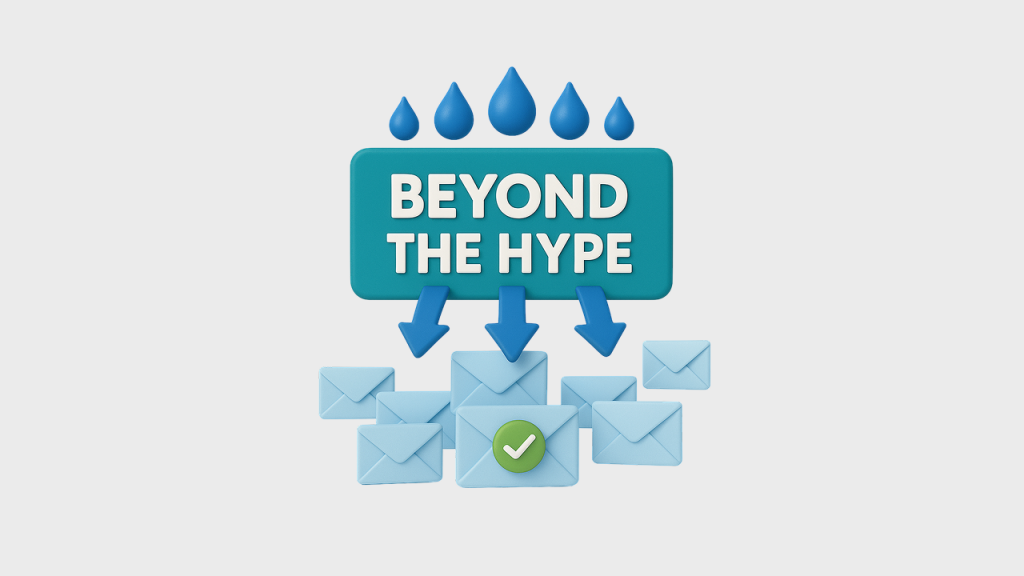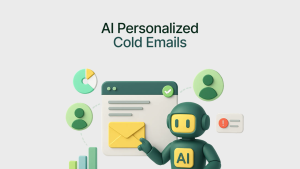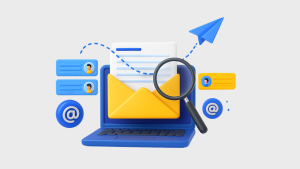- The Allure of Waterfall Email Enrichment
- The Dirty Secret of Email Databases
- The Limitations of Guesswork
- The Underlying Problem: Lack of Verification
- The Ethical Implications
- The Way Forward: Embracing Honesty and Transparency
- The Role of Technology and Innovation
- Conclusion: A Call for Industry-Wide Change
- The Way Forward: Embracing Honesty and Transparency
- The Power of Real-Time Email Validation: Spotlight on Gamalogic
As companies strive to expand their reach and connect with potential customers, the demand for high-quality email lists has skyrocketed. “Waterfall email enrichment” is a concept that promises to deliver a wealth of valid email addresses and contact information. However, beneath the surface of this enticing offer lies a troubling reality that every marketer and sales professional should be aware of.

At its core, waterfall email enrichment is a process that claims to provide comprehensive and accurate email data by cascading through multiple data sources. The idea is simple: if one source doesn’t have the information you need, the system moves on to the next, and so on, until a match is found. This approach sounds thorough and promising, but it’s built on a foundation of flawed assumptions and questionable practices.
The truth is that most of these services rely on outdated databases, unverified information, and educated guesswork, rather than real-time, accurate data. As a result, businesses often end up with lists full of invalid emails, leading to wasted resources, damaged sender reputations, and potentially even legal issues. Understanding the mechanics and pitfalls of waterfall email enrichment is crucial for any organization looking to build effective, ethical email marketing strategies in today’s digital landscape and to be left out of waterfall email enrichment scam.
The Allure of Waterfall Email Enrichment
Before we dive into the problems with waterfall email enrichment, let’s first understand what it claims to offer. The basic premise is simple: by tapping into multiple data sources in a cascading or “waterfall” approach, these services promise to provide the most comprehensive and up-to-date email contact information available.
The process typically works like this:
- A user inputs basic information about their target contacts (e.g., name, company).
- The enrichment service then searches through its primary database for a match.
- If no match is found, it moves on to secondary databases, then tertiary, and so on.
- This cascade continues until a match is found or all sources are exhausted.
On paper, this approach seems logical and thorough. After all, if one source doesn’t have the information, surely another will, right? Unfortunately, the reality is far more complicated and problematic.
The Dirty Secret of Email Databases
At the core of waterfall email enrichment lies a vast network of email databases maintained by various data providers. These companies often boast about the size of their databases, claiming millions or even billions of email addresses. They also frequently display a little green check mark or similar indicator next to each entry, suggesting that the email address has been verified and is valid.
However, this verification process is largely a facade. The truth is that these providers have a strong disincentive to actually verify every email address in their database. Why? Because doing so would invalidate a staggering portion of their data.
Consider this: Studies have shown that B2B email databases decay at a rate of about 22.5% per year. This means that nearly a quarter of the email addresses in a database will become invalid every single year. For B2C databases, the decay rate can be even higher.
If data providers were to genuinely verify their entire database regularly, they would likely find that 80% or more of their entries become invalid every six months. The larger the database, the more insurmountable the cost of replacing all that bad data becomes.
So instead of facing this harsh reality, many providers resort to creating an illusion of verification. They may use basic syntax checks or domain verification, but these methods fall far short of actually confirming that an email address is active and belongs to the intended recipient.
The result? Users are left with a false sense of confidence in the data they’re purchasing, often paying premium prices for what amounts to little more than educated guesses.
The Limitations of Guesswork
Some email enrichment services attempt to sidestep the database issue by employing a “non-database method.” This approach relies on guessing email addresses based on a person’s name and the company’s email domain. While this may seem like a more honest approach, it comes with its own set of significant challenges:
- Dealing with Catch-All Domains
Many companies use catch-all email domains, which accept any email sent to their domain, regardless of whether the specific address exists. This makes it nearly impossible to accurately guess individual email addresses, as any combination will appear valid.
- Ensuring Correct Full Names
Obtaining the correct full name of a person can be surprisingly difficult. Nicknames, middle names, multiple last names, and cultural naming conventions all add layers of complexity. Without the exact name as it appears in the person’s email address, guesswork becomes highly unreliable.
- Verifying Email Domains
Even if you have the correct name and a company’s general email format, ensuring the accuracy of the email domain is crucial. A single typo or outdated domain can lead to a failed attempt. Many companies have multiple domains or subdomains for different departments or regions.
- Edge Cases
There are numerous edge cases that can complicate the guesswork process. Some companies use unusual email formats, such as first initial + last name, or include department codes in the address. Without insider knowledge, these formats are nearly impossible to guess accurately.
The Underlying Problem: Lack of Verification
Whether using the waterfall enrichment approach with multiple databases or relying on guesswork, the fundamental issue remains the same: a lack of real-time verification. Most email enrichment services do not actually verify the email addresses they provide at the point of delivery to the customer.
This absence of verification is the primary reason why these services often fail to deliver the promised value. Users end up with a significant portion of their email lists containing invalid or outdated addresses, leading to a host of problems:
- Wasted Time and Resources
Sales and marketing teams invest considerable time crafting personalized messages and campaigns. When a large percentage of these efforts bounce due to invalid emails, it represents a significant waste of resources.
- Damaged Sender Reputation
Internet Service Providers (ISPs) and email servers keep track of sender reputations. Consistently sending emails to invalid addresses can quickly damage this reputation. This can lead to more of your emails being marked as spam, even when sent to valid addresses.
- Inaccurate Performance Metrics
With a high number of invalid emails, metrics such as open rates and click-through rates become skewed. And makes it difficult to accurately assess the performance of your campaigns.
- Potential Legal Issues
In some jurisdictions, repeatedly sending emails to invalid addresses could be seen as a violation of anti-spam laws, potentially exposing companies to legal risks.
The Ethical Implications
Beyond the practical issues, there are serious ethical concerns surrounding the practice of waterfall email enrichment. By selling data that is likely to be largely inaccurate, these services are essentially profiting from misinformation. This raises questions about the responsibility of data providers and the ethical implications of knowingly selling unreliable information.
Moreover, the practice of guessing email addresses and attempting to contact individuals without their explicit consent walks a fine line in terms of privacy and data protection regulations. In an era where data privacy is increasingly important, these practices seem outdated and potentially harmful.
The Way Forward: Embracing Honesty and Transparency
So, what’s the solution to this pervasive problem in the email enrichment industry? The answer lies in a fundamental shift towards honesty and transparency.
For Data Providers:
- Acknowledge Limitations: Email data providers need to be upfront about the limitations of their data. Instead of claiming “100% accuracy” or “verified” status for all entries, they should provide clear information about the age of the data. As well as the methods used for verification and the expected accuracy rates should be informed.
- Implement Real-Time Verification: Invest in technology to perform real-time email verification at the point of delivery to customers. This ensures that the data provided is as accurate as possible at the moment it’s needed.
- Provide Decay Rates: Offer transparent information about expected decay rates for different types of data, helping customers understand the lifespan of the information they’re purchasing.
- Focus on Quality Over Quantity: Instead of boasting about the size of their databases, providers should prioritize the quality and freshness of their data, even if it means maintaining smaller, but more accurate, datasets.
For Users of Email Enrichment Services:
- Be Skeptical of Grand Claims: Be wary of any service that promises “100% verified” or “guaranteed deliverability” for email lists. These claims are almost always too good to be true.
- Prioritize Freshness: When choosing a data provider, ask about the frequency of updates and verification processes. Fresher data, even if more limited, is far more valuable than vast quantities of potentially outdated information.
- Implement Your Own Verification: Consider using email verification tools as an additional step after receiving data from enrichment services. This extra layer of checking can help filter out invalid addresses before they impact your campaigns.
- Focus on Engagement Over Volume: Rather than aiming for the largest possible email list, focus on building a smaller, but highly engaged audience. Quality always trumps quantity in email marketing.
- Embrace Permission-Based Marketing: Whenever possible, prioritize building your email list through opt-ins and direct engagement. While slower, this approach leads to higher quality contacts and better long-term results.
The Role of Technology and Innovation
As we move forward, technology will play a crucial role in addressing the challenges of email enrichment. Advancements in artificial intelligence and machine learning offer promising avenues for improving data accuracy and verification processes.
Some potential innovations include:
- AI-Powered Verification: Machine learning algorithms could potentially predict the likelihood of an email address being valid based on various factors, improving the accuracy of guesswork methods.
- Blockchain for Data Integrity: Blockchain technology could be used to create transparent, tamper-proof records of data provenance and verification status.
- Real-Time API Integrations: Closer integration between email enrichment services and email servers could allow for instant verification at the point of use.
- Predictive Decay Modeling: Advanced analytics could help predict when specific email addresses are likely to become invalid, allowing for proactive updating of contact information.
Conclusion: A Call for Industry-Wide Change
The email enrichment industry stands at a crossroads. The current model, built on the shaky foundation of waterfall enrichment and unverified databases, is unsustainable and increasingly out of step with the needs of modern businesses and the expectations of consumers.
It’s time for a paradigm shift – one that prioritizes accuracy, transparency, and ethical data practices over inflated claims and quantity-over-quality approaches. This change won’t happen overnight, and it will require commitment from both data providers and users of these services.
By embracing honesty about the limitations of email data, investing in real-time verification technologies, and focusing on building engaged, permission-based audiences, the industry can move towards a more sustainable and trustworthy future.
Ultimately, the goal should be to create a ecosystem where email enrichment truly delivers on its promise – providing businesses with accurate, valuable contact information that enables meaningful connections and drives genuine growth. Only by addressing the current shortcomings head-on can we hope to achieve this vision and restore trust in the world of email marketing and outreach.
The Way Forward: Embracing Honesty and Transparency
So, what’s the solution to this pervasive problem in the email enrichment industry? The answer lies in a fundamental shift towards honesty and transparency, coupled with the adoption of cutting-edge real-time email validation tools.
For Data Providers:
- Acknowledge Limitations: Email data providers need to be upfront about the limitations of their data. Instead of claiming “100% accuracy” or “verified” status for all entries, they should provide clear information about the age of the data, the methods used for verification, and the expected accuracy rates.
- Implement Real-Time Verification: Invest in technology to perform real-time email verification at the point of delivery to customers. This ensures that the data provided is as accurate as possible at the moment it’s needed.
- Provide Decay Rates: Offer transparent information about expected decay rates for different types of data, helping customers understand the lifespan of the information they’re purchasing.
- Focus on Quality Over Quantity: Instead of boasting about the size of their databases, providers should prioritize the quality and freshness of their data, even if it means maintaining smaller, but more accurate, datasets.
For Users of Email Enrichment Services:
- Be Skeptical of Grand Claims: Be wary of any service that promises “100% verified” or “guaranteed deliverability” for email lists. These claims are almost always too good to be true.
- Prioritize Freshness: When choosing a data provider, ask about the frequency of updates and verification processes. Fresher data, even if more limited, is far more valuable than vast quantities of potentially outdated information.
- Implement Your Own Verification: Consider using email verification tools as an additional step after receiving data from enrichment services. This extra layer of checking can help filter out invalid addresses before they impact your campaigns.
- Focus on Engagement Over Volume: Rather than aiming for the largest possible email list, focus on building a smaller, but highly engaged audience. Quality always trumps quantity in email marketing.
- Embrace Permission-Based Marketing: Whenever possible, prioritize building your email list through opt-ins and direct engagement. While slower, this approach leads to higher quality contacts and better long-term results.
The Power of Real-Time Email Validation: Spotlight on Gamalogic
One promising solution to the challenges of email enrichment and verification is the use of advanced real-time email validation tools. A standout example in this field is Gamalogic, a company that has developed a sophisticated email validation API.
Gamalogic’s approach addresses many of the shortcomings of traditional email enrichment services:
- Real-Time Verification: Unlike static databases that quickly become outdated, Gamalogic performs email validation in real-time. This means that each email address is checked at the moment it’s needed, ensuring the highest possible accuracy.
- High Accuracy: By using this multi-step approach, Gamalogic achieves a remarkably high accuracy rate, significantly reducing the risk of bounces and invalid emails.
- Speed and Scalability: Despite the thorough validation process, Gamalogic’s API is designed for speed and can handle high volumes of requests, making it suitable for both small businesses and large enterprises.
- Integration Flexibility: The API can be easily integrated into existing systems and workflows, allowing businesses to incorporate real-time validation into their email marketing, CRM, or sales outreach processes.
- Detailed Results: Beyond a simple valid/invalid binary, Gamalogic provides detailed results for each email checked, offering insights that can inform email list management strategies.
By utilizing tools like Gamalogic, businesses can move away from reliance on potentially outdated or inaccurate email databases. Instead, they can ensure that every email address they use is verified in real-time, dramatically improving the effectiveness of their email campaigns and reducing the risks associated with sending to invalid addresses.
Ultimately, the goal should be to create an ecosystem where email enrichment truly delivers on its promise – providing businesses with accurate, valuable contact information that enables meaningful connections and drives genuine growth. Only by addressing the current shortcomings head-on and adopting innovative solutions can we hope to achieve this vision and restore trust in the world of email marketing and outreach.
You might also like

Backlinks: The Driving Force Behind Successful SEO Strategies
Backlinks are more than just links—they’re powerful signals that tell search engines your content is credible and worth ranking. As a key factor in SEO, they can elevate your site’s visibility or hold it back. This guide explores why backlinks still matter and how to leverage them effectively in today’s search landscape.

How to Use AI Personalized Cold Emails to Engage High Value Prospects
Reaching high-value prospects today takes more than polished templates. AI-powered personalization helps you cut through inbox noise by tailoring each message to a prospect’s role, intent, and priorities at scale. This blog explores how to use AI thoughtfully to craft cold emails that feel relevant, human, and worth replying to.

Email Validation: The B2B Sales Intelligence and Prospecting Game-Changer in 2025
This blog explores how email validation is transforming B2B sales intelligence and prospecting in 2025—helping teams reach real prospects, reduce bounce rates, and protect sender reputation. Discover why clean data isn’t just a backend task—it’s your competitive edge.






 No credit card required
No credit card required


Post your Comment.